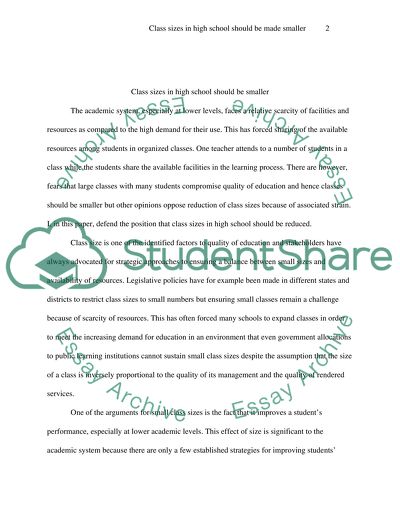Class sizes in high school should be smaller Essay. Retrieved from https://studentshare.org/english/1471056-class-sizes-in-high-school-should-be-smaller
Class Sizes in High School Should Be Smaller Essay. https://studentshare.org/english/1471056-class-sizes-in-high-school-should-be-smaller.


